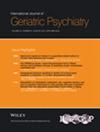Longitudinal Association of Conversion Patterns of Functional Disability With Risk of Depressive Symptoms in Older Chinese Adults
Abstract
Background
Functional disability has been identified as a risk factor for depressive symptoms (DS). However, most studies have measured functional disability at only one time point, and functional disability is dynamic and changeable over the life course, and can vary between individuals. Therefore, we aimed to examine the longitudinal association between conversion patterns of functional disability and the risk of DS.
Methods
Based on the China Health and Retirement Longitudinal Study (CHARLS) participants in 2013, we retrospectively assessed their functional disability from 2011 to 2013 through activities of daily living ability (ADLs) and instrumental activities of daily living ability (IADLs), which were categorized as ten conversion patterns. A total of 2057 participants who met the inclusion criteria were included in the final analysis and were followed from 2013 to 2018 to determine the incidence of DS, measured by the 10-item Center for Epidemiological Studies Depression Scale (CESD-10). Cox proportional hazards regression models were applied to estimate association between conversion patterns of functional disability and the risk of DS.
Results
Over the 61 months follow-up period, 508 incident DS cases were identified. Three conversion patterns of functional disability were more likely to develop DS than those with never both ADLs and IADLs disabilities: relieved both ADLs and IADLs disabilities (adjusted HR = 2.01, 95% CI = 1.21–3.32), persistent only IADLs disability (adjusted HR = 1.81, 95% CI = 1.04–3.12), and persistent both ADLs and IADLs disabilities (adjusted HR = 4.75, 95% CI = 2.19–10.31).
Conclusions
Older adults with persistent both ADLs and IADLs disabilities may be at a greater risk of DS. Meanwhile, those with relief should not be ignored for functional disability. Attention should be paid to psychological monitoring of older adults with a history of or current functional disability.

 求助内容:
求助内容: 应助结果提醒方式:
应助结果提醒方式:


